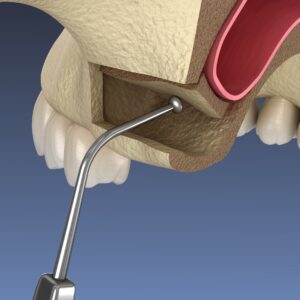Description
Familiarity with Treatment
Type 1 tympanoplasty, also known as myringoplasty, is a surgical procedure aimed at repairing a perforation of the tympanic membrane (eardrum) without addressing any middle ear abnormalities. It is a well-established procedure with a long history, dating back to the 17th century, and has evolved with advancements in surgical techniques and instrumentation.
Procedure
The myringoplasty procedure involves the closure of the perforation in the tympanic membrane. The surgery may be performed using various techniques, including endoscopic and microscopic approaches. Graft materials commonly used for myringoplasty include temporalis fascia, tragal cartilage, tragal perichondrium, and paper or gel grafts for small perforations. The success of the procedure is often measured by the surgical closure of the perforation and the restoration of hearing.
Who is it Suitable For?
Myringoplasty is suitable for individuals with a perforated tympanic membrane and no associated middle ear abnormalities. It is often indicated for patients with chronic perforations that have not healed spontaneously and may experience symptoms such as hearing loss or recurrent ear infections.
Who is it Not Suitable For?
Myringoplasty may not be suitable for individuals with active discharge from the middle ear, uncontrolled nasal allergy, or certain conditions that may affect the success of the procedure. Additionally, it may not be recommended for children under a certain age, typically less than 3 years old.
Advantages
- Restoration of Hearing: Myringoplasty aims to restore hearing loss associated with the perforated tympanic membrane.
- Prevention of Infections: By closing the perforation, myringoplasty may help prevent recurrent middle ear infections.
- Improved Quality of Life: Successful closure of the perforation can lead to improved quality of life and reduced symptoms associated with the perforation.
Complications
Complications of myringoplasty are rare but can include risks such as infection, bleeding, or failure of the graft to heal. Additionally, there may be a risk of persistent or recurrent perforation, which may necessitate further intervention.
Preoperative Care
Preoperative care for myringoplasty involves a comprehensive evaluation by a healthcare provider to assess the extent of the tympanic membrane perforation and the patient’s overall health. This may include imaging studies and a thorough examination of the ear and surrounding structures.
Postoperative Care
Following myringoplasty, individuals should adhere to postoperative instructions provided by their healthcare provider. This may include guidelines for wound care, activity restrictions, and follow-up appointments to monitor the healing of the tympanic membrane and assess hearing function.
Myringoplasty is a well-established surgical procedure aimed at repairing perforations of the tympanic membrane, with the goal of restoring hearing and preventing recurrent ear infections.





Reviews
There are no reviews yet.